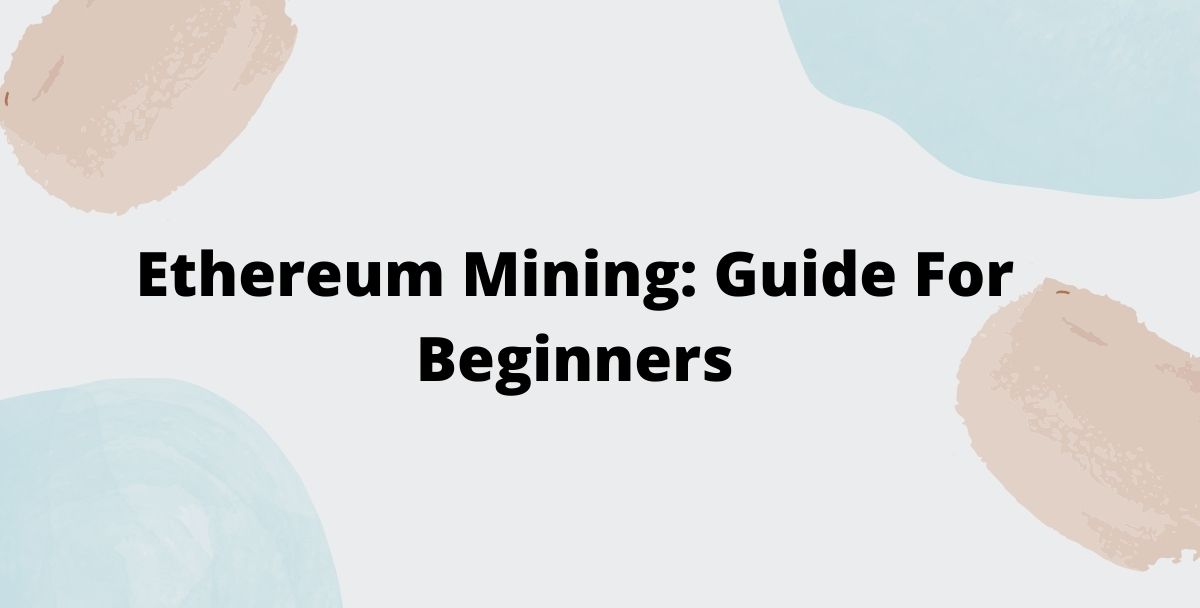Ethereum Mining: Guide For Beginners

To put it another way, cryptocurrency mining is a method of resolving difficult mathematical problems. Miners are basically the backbone of many cryptocurrency networks since they devote their time and computational resources to solving such math problems, thus supplying the network with a so-called “proof-of-work” that verifies Ether (ETH) transactions. Miners are often in charge of generating new Ether tokens due to this operation, as they collect Ether as a reward for successfully performing a PoW mission.
Thank you for reading this post, don't forget to subscribe!PoW is built on the hashing algorithm, which generates an “encrypted” piece of information from any random material. The distinction between hashes and regular cryptography is that hashes can only be used in one direction. The best way to figure out what input was used to create a hash is to start hashing all potential input variations before seeing which one matches. This is complicated even further because small variations in the original results will result in radically different outcomes.
The “difficulty” parameter is used to build a set of desired hashes in proof-of-work. Miners should brute-force a hash that meets the difficulty’s requirements by brute-forcing different criteria, like the hash of the preceding block. This is an energy-intensive activity that can be easily controlled by increasing or decreasing the complexity level. Miners have a “hash rate” that decides how many different variations they attempt in a second, and the more miners there are, the more impossible it is for outside actors to duplicate the network. Miners protect the network by bringing in real effort. Visit yuanpaygroup.site yourself and start trading.
Why Should You Mine Ether?
Mining transforms the process of maintaining a system into a challenging yet normally lucrative venture, so the main motive for mining is profits. Miners are charged a set amount for each block they mine, plus any consumers’ transaction fees. Fees normally contribute a limited portion of total sales, but Ethereum’s decentralized finance boom in 2020 managed to shift the balance. Mining may often be used to obtain Ether without needing to make a direct investment in the cryptocurrency.
Proof-Of-Stake Transition:
The Ethereum 2.0 roadmap announced plans to move to proof-of-stake, a consensus algorithm that will deprecate miners by limiting the amount of time current Ether miners have to gain a return on their investment, which is a popular source of worry for any prospective Ether miner. Fortunately, PoW mining will most definitely continue to work until about 2023. The introduction of Ethereum 2.0 Phase 0 is anticipated in 2020, and it is a different blockchain that would have little effect on mining. Mining may begin to be phased out only in Phase 2, but as of October 2020, there are no clear proposals in place to make the change.
The second step is set to launch in late 2021 or 2022. However, it’s worth noting that Ethereum’s roadmap has a history of being delayed; in 2017–2018, it was generally assumed that the transformation would be finished by 2020. Nobody knows when Ethereum 2.0 will be done, although most projections say that new miners will have ample time to recoup at least a portion of their hardware expenditure by October 2020.
Is Mining Ether Profitable?
The cost of energy in a specific region determines whether or not some particular mining method is viable. Anything below $0.12 per kilowatt absorbed per hour is generally sustainable, but rates below $0.06 are advised to render mining a fully feasible economic venture. Most home mining attempts will be disqualified due to these estimates, particularly in developing countries where electricity costs are usually greater than $0.20. And if it is necessary to make a profit at these costs, the return on investments would be negatively impacted. E.g., a $3,000 miner that produces $200 per month in sales and consumes $45 in energy at $0.05/kWh would pay for itself in 19 months. The same miner will be paying back in 150 months, just for 12 years, in an environment where power costs $0.20/kWh.
However, several home enthusiasts have devised ways to build rigs capable of earning $122 000 a year! Skilled miners may benefit by relocating their activities to areas with the cheapest energy or taking advantage of the special prices reserved for businesses. These are a few of the key factors why mining has developed into a serious and capital-intensive sector.
